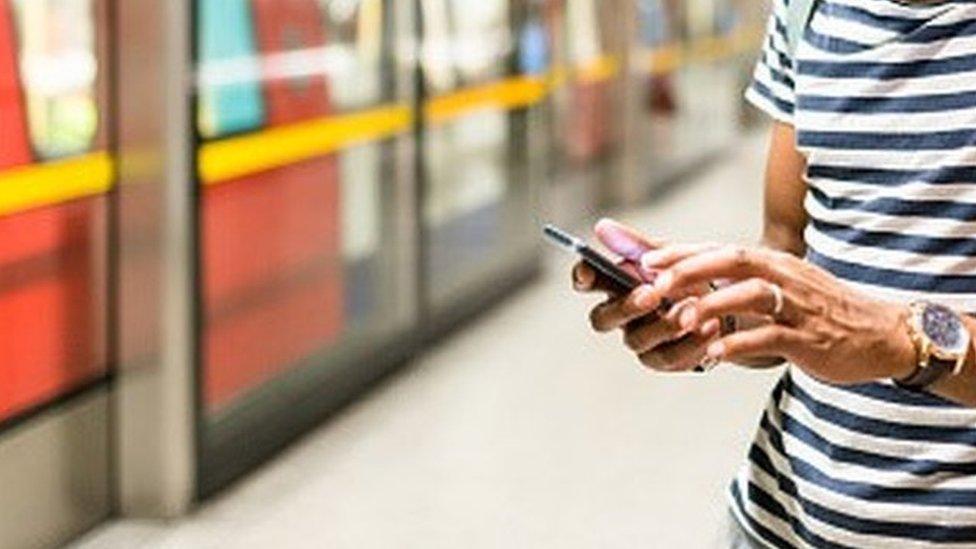TfL to track tube users via their wi-fi to ease overcrowding
- Published

Data was collected from 5.6 million mobile devices during a four-week pilot in 2016
Tube commuters will have their mobile wi-fi data collected from July as part of a scheme to improve journeys, Transport for London (TfL) has said.
A four-week trial in 2016 , externalshowed collecting anonymous data could help passengers better plan routes to avoid congestion and delays, TfL said.
Privacy campaign group Big Brother Watch expressed concern over the scheme.
TfL said the benefits could be "enormous".

Transport for London said data could be used to provide customers with better alerts about overcrowding
From 8 July data will be collected from devices as they log-on to the wi-fi in more than 260 London Underground stations.
By using this data, TfL said it will gain a more accurate understanding of how people move through stations, interchange between services and how crowding develops.
The pilot scheme, which cost £100,000, focused on 54 stations and saw data collected from 5.6 million mobile devices.
It revealed a number of results that could not have been detected from ticketing data or paper-based surveys, TfL said.

The 2016 pilot helped map the various ways passengers travelled between different stations
Data will be be made available for app developers, academics and businesses to create new products and services, TfL said.
Clear signage, based on TfL's signs about the CCTV across the network, will shortly be installed.
Customers who do not want their data to be collected can opt out by turning off the wi-fi on their devices.
TfL said it has worked with Information Commissioner's Office to address privacy and transparency concerns.

How TfL say the data could help passengers

TfL said by using the data it could get a more accurate understanding of how crowding develops
The data collected could in future be used to work out how busy incoming trains are, and help commuters plan their journeys accordingly.
If you are starting from Camden Town, for example, and trying to get to Victoria, you could choose the quickest route changing at Warren Street.
However, if you are in no rush, an app using the kind of data collected could tell you that you could take the slower but much less crowded route via Embankment, and you may get a seat.
This could help people make much more comfortable journeys across the capital at rush hour.

A Big Brother Watch spokeswoman said: "We all should be concerned when our phones are tracked and movements monitored without our consent.
"The public should be fully informed about what data will be taken from their phones, when and why, and reminded of their ability to prevent this tracking by turning off their wi-fi."
Lauren Sager Weinstein, Chief Data Officer at TfL, said: "The benefits this new depersonalised dataset could unlock across our network are enormous.
"By better understanding overall patterns and flows, we can provide better information to our customers and help us plan and operate our transport network more effectively for all."
- Published8 September 2017

- Published31 May 2017
